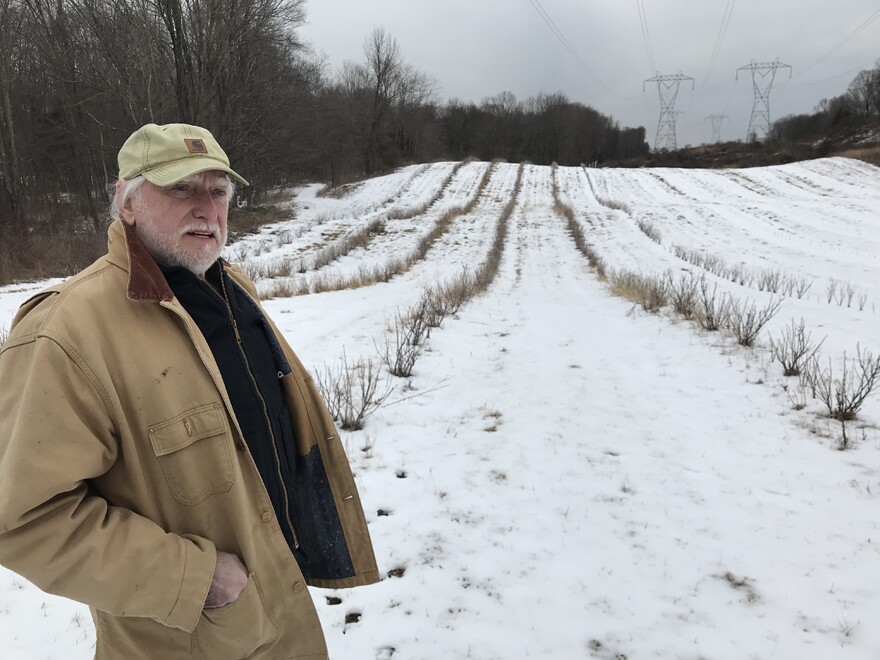I can’t remember how the subject of currants came up. I’m not talking about electrical currents or current events. I’m referring to the fruit, currants. The French call it cassis. I couldn’t understand why currants aren’t as popular in the United States as they are in Europe. They’re a sophisticated tart little black or red berry; to the extent that anyone has the temerity to describe one fruit as more sophisticated than another. I can hear listeners saying, “Well, what about mango?” Or persimmon? Or apricots.
I’m not here to argue. Any fruit can hit the spot if you’re in the right mood and it’s perfectly ripe. I was just wondering why currants aren’t more prominent in the mix? Perhaps they were top of my mind because I’d recently purchased a rewarding jar of red currant preserves at the Polish Deli in Hudson, NY. Currant jam, or more commonly jelly from my experience, can give strawberry or raspberry a run for its money any day.
The subject arose when Alix Becker, a friend, was sharing her plans to start raising bees this summer. She told me that Greg Quinn, a horticulturist in Duchess County, was going to lend her his expertise. It was around that point that we segued to currants – again, I don’t know how the long mental leap from bees to berries occurred – but Alix informed me that Greg was Mr. Currant. He was the guy who reintroduced currants to New York State, successfully lobbying the legislature in 2003 to overturn a ban that dated back to the early 20th Century.
The reason for the ban is that currants were held responsible for blister rust, a disease affecting white pine trees. Greg, who’d taught at the New York Botanical Garden for twenty years, did some research and determined that the science behind the ban was incomplete and outdated. Putting aside one’s feelings about currants for a moment, whether you have any or not, it takes all my gumption to rouse sufficient energy to purchase and plant, say, a single lilac bush. Greg and his wife Carolyn Blackwood, a photographer and movie producer, bought their farm in the Hudson Valley in 1999 and four years later Greg gets this ban overturned and creates the first commercial currant farm in New York State. That’s pretty impressive.
Today Greg’s website – Currantc.com -- sells pretty much anything you can conceive of made of currents, with the possible exception of sculpture. Currant preserves, of course. But also currant nectar, currant syrup, currant dessert topping, chocolate covered currants, cocoa dusted currants, currant tea – both caffeinated and decaffeinated – frozen currants and currant plants if you want to grow your own. He even sells 50lb. tubs of currant concentrate.
“Black currants have five times the antioxidants of blueberries,” Greg informed me, “four times the vitamin C of oranges and more potassium than bananas.”
On Tuesday I visited him and found myself standing in a snow covered field filled with rows and rows of currant bushes. Five different varieties. Admittedly, this isn’t the most logical time of year to be writing a story about fruit growing. But I wanted to meet the guy. I wanted to talk currants with someone I knew shared my enthusiasm for those tart little fellows. Also, is there any better way to warm your frigid bones, short of taking a Caribbean cruise, than thinking of growing season and gardens?
Greg explained that he developed his affection for currants while cooking at a restaurant in Bavaria. When I mentioned that I’d recently scored a jar of red currant jam at the Polish Deli in Hudson, he said that Poles are crazy about currants – they’re the world’s second largest producer of currants – and that he’s made several trips to Poland when he was launching his farm to better learn how grow them. He boasted that he was given rights for Canada and the U.S. to all the Polish patented variants. He even bought a Polish currant harvesting tractor that catches about 90% of his berries.
He’s worn lots of other hats. Children’s book author. Radio garden and nature expert. Come to think of it one of the few currant-related revenue streams he seems yet to exploit is merchandize. I’d certainly be proud to wear a red or black currant t-shirt, just so it came in extra large and 100% cotton.
Apparently something of a polymath, it wasn’t until after we’d toured his ancient post and beam barns where I learned the derivation of the word threshold; after we’d driven his Gator past his bee hives and his Riesling wine vines to the white oak he planted and where he plans to be buried and he gave me a tutorial on how native Americans pruned oaks to serve as directional signals; and we examined some of the 127 tree branch piles he hopes will provide refuge to the ruffed grouse he wants to reintroduce to the area, that we finally got to the main reason, or at least one of them, I’d traveled fifty-five minutes from my home in Columbia County.
I was hoping Greg would share some of his currant bounty with me. And he did. Sitting by the fireplace in art-filled late 1700’s home we sipped refrigerated black currant nectar. Ah! Delicious.
Ralph Gardner, Jr. is a journalist who divides his time between New York City and Columbia County. More of his work can be found at ralphgardner.com
The views expressed by commentators are solely those of the authors. They do not necessarily reflect the views of this station or its management.




